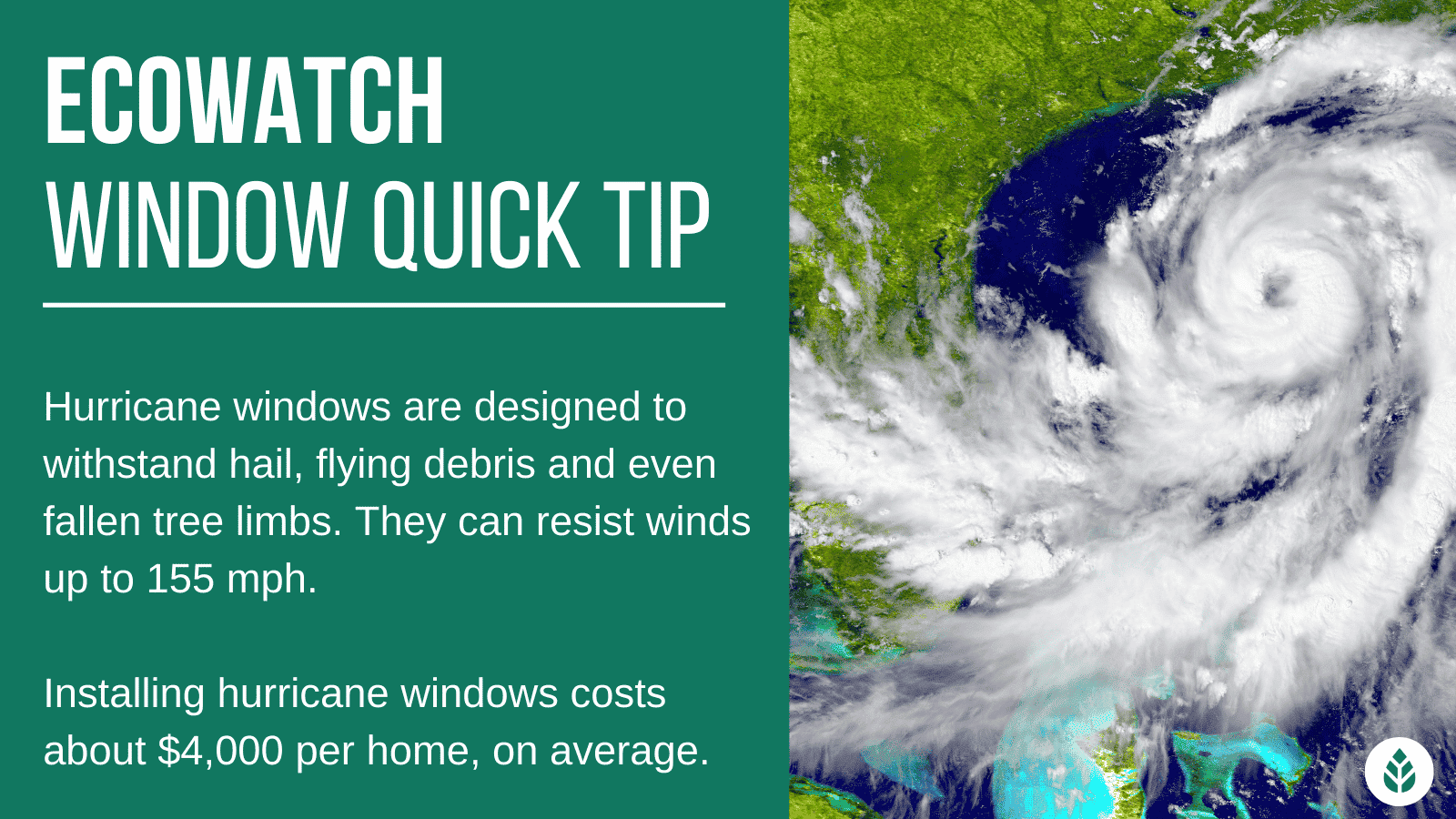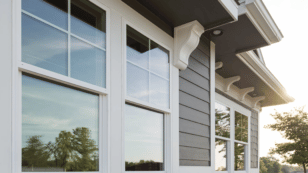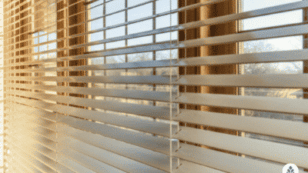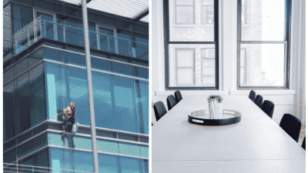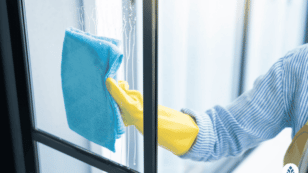
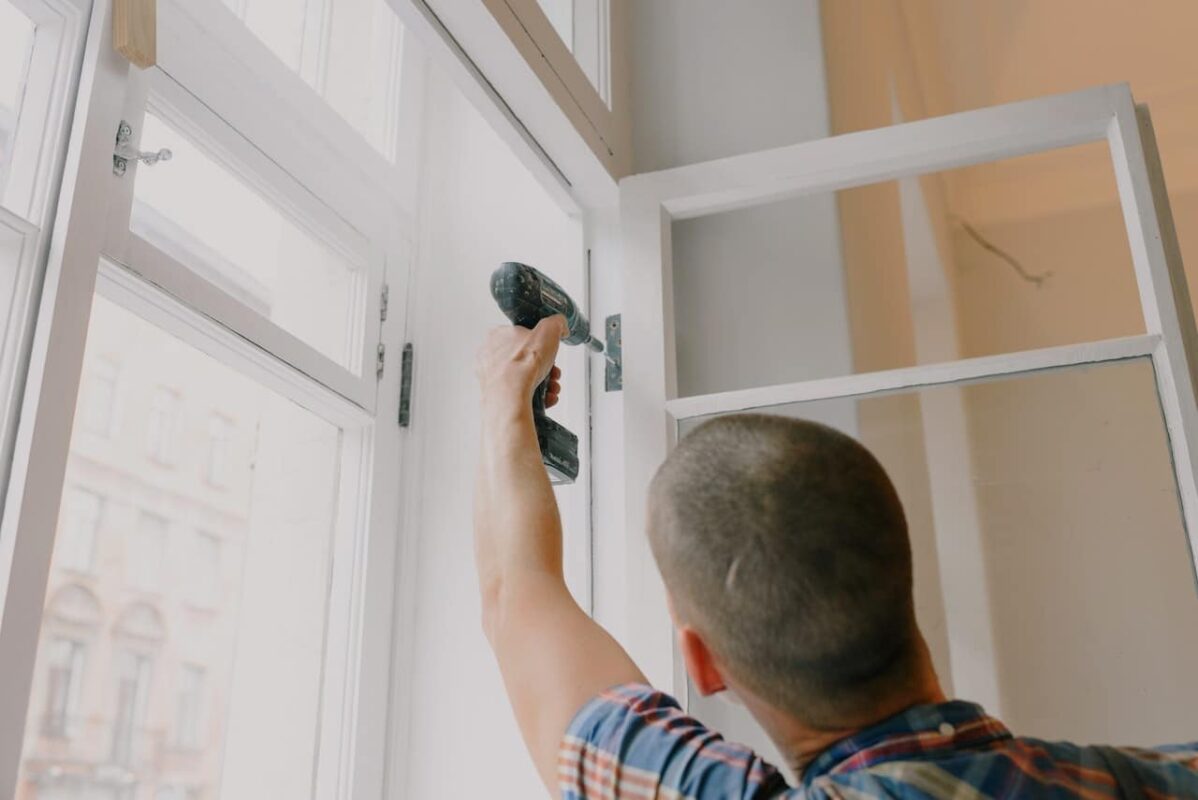
Homeowner’s Guide to Soundproofing Windows (2024)
In this guide on soundproofing windows, you’ll learn:
- How does window soundproofing work?
- What DIY methods are there to soundproof windows?
- Will you benefit from having the job done by a professional window company?
- How double-pane and triple-pane windows improve soundproofing?
This EcoWatch guide has helped many homeowners learn more about the process of soundproofing windows and can help you decide on completing the DIY project or hiring a professional. Let’s get started!
Each product and or company featured here has been independently selected by the writer. You can learn more about our review methodology here. If you make a purchase using the links included, we may earn commission.
How Do You Soundproof Windows?
If there seems to be a lot going on outside your home — like road traffic, airplanes flying overhead, or other sources of noise — you might find yourself wishing there was a way to block out the sounds and bring a little peace to your living space. In most cases, the majority of the noise is coming through your windows.
Windows have a sound transmission class (STC), which measures how effectively building partitions attenuate sound. Windows will have a numerical STC rating, and the higher the rating, the better the sound attenuation.1 There’s also the outdoor/indoor transmission class (OITC), which measures how well windows absorb sounds passing through them.
Improving your windows’ STC rating or OITC rating will dampen sounds, but it’s not always obvious how to do this. Below, we’ll be providing six different methods for soundproofing your windows, which range in difficulty from DIY-appropriate to needing a professional’s help.

Window World

200 Locations Nationwide
Average cost
Pros
- EnergyStar Partner
- Large service area
- Wide variety of products and services
- Great industry reputation
- Lifetime warranty
Cons
- Quality of service will depend on your area

Renewal by Andersen

Save $375 Off Each Window
Average cost
Pros
- Great industry reputation
- Award-winning company
- Member of US Green Building Council
- Manufactures products in-house
Cons
- No lifetime warranty
- More expensive than competition

Window Nation

9 States (75 miles from showrooms)
Average cost
Pros
- Award-winning company
- Wide variety of products and services
- Manufactures products in-house
- Custom Designs
Cons
- Installation not covered by warranty
- Limited service area
Install Double-Pane or Triple-Pane Windows
The first thing you can do to soundproof your windows is to install double-pane or triple-pane windows. If your home is currently fitted with single-pane windows, the single sheet of glass is probably doing very little to keep noise out.
Here’s a quick overview of each:
A double-pane window has two panes of glass with a sealed layer of argon or krypton gas between them. The added layers of protection will prevent sound vibrations from passing from the outside into your living space. Triple-pane windows are even more effective at blocking sound, as they have three panes of glass and two layers of insulative gas.
Homeowners upgrading from single-pane to double- or triple-pane windows will very likely see a major difference in the sound vibrations that make their way indoors. The maximum STC of a single-pane window is around 26, whereas the STC of a double-pane window or a triple-pane window can reach up to 35.
The average cost to install a new double-pane window is around $450. The average cost of a triple-pane window is around $800. These prices will vary depending on glass coatings, frame material, window location, and other factors.
Install Noise-Reducing Windows
If you’re looking for even more defense against exterior sounds, you could opt for noise-reducing windows. As the name implies, these windows are made specifically to block out noise, although they do offer some increase in energy efficiency as well. Noise reduction windows use two panes of glass of different thicknesses to absorb sound more efficiently than standard windows. The panes can also be spaced differently than with regular double-pane windows.
Noise-reducing windows can reduce exterior noise levels by up to around 50%, which is a significant reduction that will keep your living space peaceful and quieter than most double-pane windows that aren’t made specifically to block sound. For reference, that means a passing motorcycle, which is normally around 95 decibels, would be reduced to around 46 decibels, which is the level of a normal indoor conversation.
The average cost to install a single noise-canceling window is around $600, although this price can vary significantly depending on the window size and style.
Seal Around Your Windows with Caulk
One of the most affordable ways to reduce noise coming in from the outdoors is to seal around your windows with caulk sealant. All windows need to be weatherproofed — a process that usually involves sealing the perimeter of the window inside and out with silicone or polyurethane caulk. Over time, the caulk expands and contracts with changes in temperature and moisture, leaving it prone to cracking.
If the caulk around your windows fails as it ages, it will allow more sound vibrations through, leading to louder sounds from the outdoors. You can seal your window yourself for under $10 in materials, or you can hire a professional to do the work for you for under $100 per window in most cases. One added benefit of resealing your windows is improved energy efficiency, so using this soundproofing method is almost always worth the investment.
Install Window Inserts
Sound-blocking window inserts are another option that works similarly to storm windows. However, window inserts are installed on the inside of your windows rather than the outside. The double layer of glass helps reflect more sound coming in from the exterior, and the air gap between the glass can help absorb some of the sound waves.
Installing window inserts can easily be a DIY job for the handy homeowner, and it’s one of the most effective ways to block sound. A good window insert coupled with a double-pane window behind it can provide an STC of up to around 55, which will significantly reduce any sound coming in through your windows. Most homeowners consider an STC between 40 and 50 to be total privacy, so an STC of 55 is outstanding.
The average cost of a window insert is around $600, so some homeowners choose to install them just over windows that face noisy areas, like major roads or firehouses.
Install Storm Windows
If you live in an area where the weather can be extreme — including the risk of hurricanes, tornadoes, and extreme thunderstorms — then you’re probably familiar with storm windows. This reinforced glass, acrylic, or fiberglass windows get installed over the exterior of your existing windows to provide physical protection from strong winds and flying debris.
Some homeowners remove storm windows in the off-season and replace them when the extreme weather becomes a threat again. If you don’t mind the look of storm windows, you can leave them up year-round to help block some of the sound coming from outside your home.
It’s important to note that storm windows don’t allow for ventilation in some cases, but you can choose to leave them up only on the side of your home where unwanted noise is an issue — like the side facing a major road. This will help prevent some sound from entering your living space but will still allow for some areas to be ventilated.
Install Noise-Reducing Window Treatments
Your final layer of defense against outside noise will be your window treatments, which serve as an additional absorptive or reflective layer to dampen sounds. One of the most popular options is noise-blocking drapes or soundproof curtains, which are made from thick materials that absorb sound. An added benefit of these drapes is that they block out sunlight as well, so they can increase your home’s energy efficiency as well and make your interior more comfortable during extreme temperature times. The average cost for noise-blocking drapes is around $100 per window, excluding hanging hardware.
Another popular option is plantation shutters. These shutters are installed on the interior of your windows and have wide slats that shift open and closed to block out sunlight and provide privacy. Depending on your preference, they can be smaller and fit inside your window frames or larger and fit over your window frames. These shutters can reflect back sounds coming in from outside, and they also add a layer of protection from sunlight and outdoor temperatures, so they’re quite energy-efficient as well. The average cost of plantation shutters is around $300 per window.
Benefits of Soundproofed Windows
Most of the options above for soundproofing windows involve spending quite a bit of money, so some homeowners wonder if these options are worth their time and investment. Soundproofed windows come with several advantages that can help justify the expense.
The first and most obvious upside to soundproofing windows is that they dampen noise from your home’s exterior. If you live near busy roads, airports, firehouses, noisy neighbors, or other sources of noise pollution, or you just want a little more privacy in your home, soundproofed windows are quite appealing. Some of the options mentioned above can significantly increase the sound transmission class (STC) of your windows, allowing you to dampen sounds by up to 50% or more.
Another major benefit is that most of the options above will also improve your home’s energy efficiency. Double- and triple-pane windows are far more insulative than single-pane windows, as are windows that are treated with storm windows or window inserts. Even heavy drapes and plantation shutters can keep sunlight and external temperatures outside, and resealing the weatherstripping around your windows with caulk will slightly improve energy efficiency as well.
Additional benefits to increasing your window soundproofing and energy efficiency include a more comfortable living area that is quiet and maintains a suitable temperature, less strain on the environment from overusing your heating and cooling equipment, lower energy bills, and less wear and tear on your HVAC systems, prolonging their service lives.
FAQ: How to Soundproof Windows
The cheapest solution to add some soundproofing to your windows is to seal around them with an acoustic caulk or acoustic foam. This project can be done for less than $10 per window as a DIY home improvement project. However, it can only be expected to block a small amount of sound, and it likely won’t do much to improve soundproofing if you don’t implement other strategies as well.
There are several options for soundproofing your windows without replacing them. Installing storm windows or noise-blocking window inserts are the best options that can block the most sound. You can also add acoustic caulk to the perimeter of your windows to block out a small amount of sound. Finally, window treatments like noise-dampening drapes or plantation shutters can help prevent sounds from disturbing you in your living area.
The best solution for most homeowners looking to soundproof their windows is to install window inserts. These sound barrier inserts fit inside your windows and offer a few inches of air space to absorb sounds coming in from outside. They can dampen sounds by up to 90% in some cases, although they do cost around $600 per window.

 233k
233k  41k
41k  Subscribe
Subscribe 
